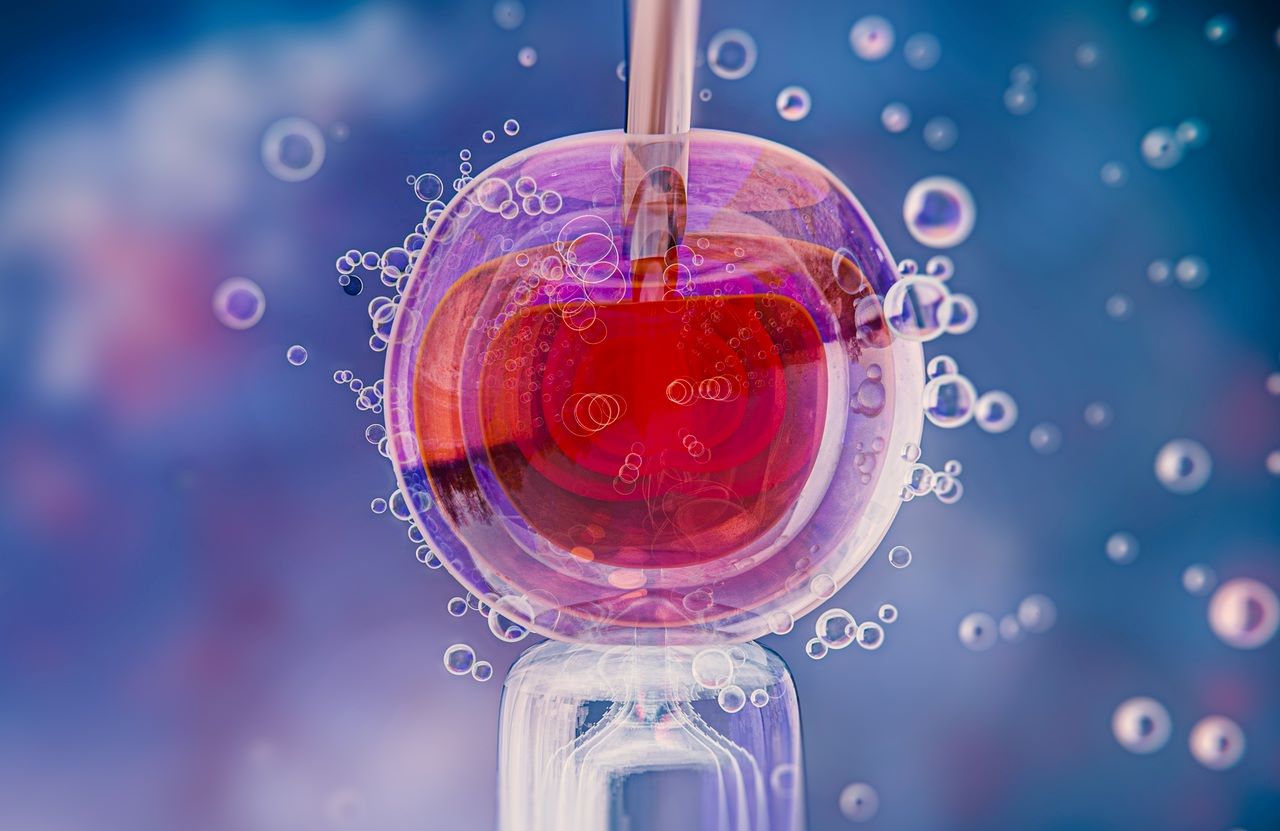In vitro fertilisation (IVF) is a standardised procedure in assisted reproduction. After hormonal stimulation, oocytes are retrieved, brought together with sperm in the laboratory, and transferred to the uterus as embryos. This article provides precise, level-headed guidance without exaggeration: indications, realistic success factors, the clinical pathway, safety aspects, the role of adjunct procedures, and how IVF differs from ICSI and IUI.
What is IVF?
Under controlled stimulation, multiple follicles mature. Mature oocytes are aspirated, incubated with prepared sperm, and cultured further. A suitable embryo is transferred; additional good-quality embryos can be cryopreserved. A clear patient overview is provided by the public health portal NHS.
Who is IVF suitable for?
- Tubal factors (blocked or severely damaged fallopian tubes).
- Endometriosis with a relevant impact on fertility.
- Unexplained infertility after several well-planned IUI cycles.
- Selected male-factor issues where conventional IVF appears sufficient; with pronounced impairment, often ICSI.
- Fertility preservation and donor treatments according to local law and medical counselling.
Principle: the method follows the diagnosis. Proceed stepwise, avoid unnecessary complexity, and document decision pathways.
Evidence & success rates
The chance of a live birth per cycle is chiefly determined by age and oocyte quality, the cause of infertility, embryo quality, and the transfer strategy. National guidance recommends discussing expectations by age and by centre; figures vary between centres and cohorts. A sober overview of realistic expectations and how to avoid unproven extras is available from NICE.
Step-by-step process
- Preparation: History, investigations, infection screening; discuss alternatives, chances, and risks.
- Stimulation & monitoring: Individual dosing, ultrasound and hormone tracking; active OHSS prevention.
- Follicle puncture: Retrieval of mature oocytes under ultrasound guidance.
- Semen collection/preparation: Selection of motile sperm; partner or donor sperm per standards.
- Fertilisation: Conventional IVF (co-incubation) or—where clearly indicated—ICSI.
- Embryo culture: Assessment of development, possibly culture to blastocyst.
- Embryo transfer: Transfer of a suitable embryo; number according to guidance, age, and embryo quality.
- Cryopreservation: Freezing of additional suitable embryos/oocytes.
- Luteal phase & test: Progesterone support; pregnancy test about 10–14 days after transfer.
Patient-friendly, step-by-step information is also provided by an NHS centre: Guy’s & St Thomas’.
Embryo culture & transfer
The goal is a healthy singleton pregnancy with the lowest possible risk. Where feasible, professional societies recommend single embryo transfer (SET) to avoid multiple pregnancy. Guidance on embryo number and timing of transfer is provided by the European society ESHRE: Embryo transfer guideline.
Risks & safety
- Stimulation: Ovarian hyperstimulation syndrome (OHSS)—now rarer thanks to modern protocols, trigger strategies, and “freeze-all”, but still requires active prevention.
- Procedures: Rare bleeding/infection after retrieval; post-transfer symptoms are usually mild and transient.
- Multiple pregnancy: Higher risk when transferring more than one embryo; hence SET is preferred.
- Psychological load: Cycle-related stress is common; plan structured counselling and psychosocial support.
Public information bodies such as HFEA and the NHS recommend clear stopping criteria when OHSS risk is present and a conservative embryo number per transfer.
Lab add-ons: what is evidenced?
Many add-ons do not reliably increase live-birth rates for most patients. The UK regulator assesses add-ons transparently and advises restraint unless there is a clear indication: HFEA add-ons.
Comparison: ICI · IUI · IVF · ICSI
| Criterion | ICI | IUI | IVF | ICSI |
|---|---|---|---|---|
| Principle | Placement of the sample near the cervix | Washed sperm into the uterus | Oocyte and many sperm in the laboratory | A single sperm is injected into the oocyte |
| Typical indication | Entry option without severe factors | Unexplained infertility, mild male factors, donor sperm | Tubal factors, endometriosis, unsuccessful IUI | Pronounced male factor, fertilisation failure |
| Per-cycle success | Rather low, timing-dependent | Moderate; depends on age/diagnosis | Higher than IUI; age-dependent | Similar to IVF; advantage mainly with male factor |
| Complexity | Low | Low–medium | Medium–high | High (micromanipulation) |
| Main risks | Small; hygiene/testing are central | Multiple-pregnancy risk with stimulation | OHSS, procedural risks, multiples | As in IVF + potential cellular damage |
Consequence: use ICSI selectively for a clear indication; use IUI as a stepwise entry; if success is lacking, transition in a structured way to IVF/ICSI.
Planning & good practice
- Clarify indication, alternatives, and objectives transparently; discuss expectations by age.
- OHSS prevention: measured stimulation, appropriate trigger strategy, consider “freeze-all” when at risk.
- Prefer single embryo transfer to minimise multiple-pregnancy risk.
- Evaluate add-ons critically and use only with a plausible indication; rely on transparent evidence.
- Define switch criteria: number of cycles, adjustments, and, if needed, changing method or pausing.
For guidance and patient information, NHS, NICE, and ESHRE are suitable sources. A small number of vetted references in text is sufficient.
RattleStork – well-prepared decisions around IVF
RattleStork is not a clinic and does not replace medical advice. The platform supports personal organisation: verified profiles and secure messaging, private notes on appointments, medications, and questions for the care team, as well as simple checklists for consultations and decision-making. This keeps information together—from the first appointment to embryo transfer.

Conclusion
IVF is an effective, well-standardised procedure. The main drivers of success are age, cause, embryo quality, and a cautious transfer strategy. Safety comes from modern stimulation protocols, clear OHSS prevention, single embryo transfer, and a critical approach to add-ons. Informed decisions and structured planning improve the chances—at the lowest possible risk.

